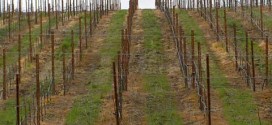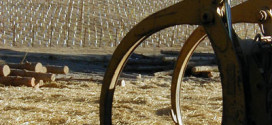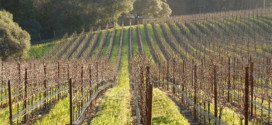Resource Degradation in the Gualala Watershed from Timber Harvest and Conversion Activities Approved by CDF
Excerpt from
Sierra Club and Friends of the Gualala River
v. CDF; Campbell et al.,
Appellant’s Opening Brief,
by Mark Wolfe et al,
July 12, 2006
[T]he Gualala and its tributaries have suffered and continue to suffer significant water quality and habitat impairment as a direct result of logging and timberland conversion activities. . . Deforestation of watershed lands for vineyard development has increased water temperature and sediment loading, and decreased instream flows, all of which degrade habitat and aggravate the existing impairment of coho and steelhead. Long term vineyard operation on these lands in turn increases runoff of pesticides, herbicides, fertilizers and other agricultural chemicals into these streams, further degrading water quality and fish habitat. As a result of these and other timber harvesting activities, the Gualala is now listed under Section 303(d) of the federal Clean Water Act as water quality-impaired from excessive sediment deposits and heightened temperatures, conditions which seriously degrade habitat for fish and other aquatic life.
[M]uch of this degradation is directly attributable to CDF’s systemic failure to adequately consider cumulative impacts to water quality and aquatic habitat from timber harvest and timberland conversion activities in the North Coast. Several federal and state agencies, as well as scientific experts, have published reports in recent years documenting the inadequacy of CDF’s Forest Practice Rules (“FPRs”) to assess and mitigate cumulative watershed effects from logging and conversion projects.
For example, in listing the North Coast population of steelhead as threatened under the federal Endangered Species Act, the National Marine Fisheries Service (“NMFS”) specifically found that the aquatic habitat protection measures contained in the FPRs are “scientifically inadequate to protect salmonids including steelhead,” “do not ensure protection of anadromous salmonid habitat and populations,” and provide “inadequate and ineffective cumulative impact analysis.”
The U.S. Environmental Protection Agency has expressed similar concerns that the FPRs, which provide only for a parcel-by-parcel based assessment, “do not adequately address cumulative impacts from timber harvesting activities.” The U.S. Forest Service, for its part, found the FPRs “not sufficient to restrict excess sediment production from logging-related activities to levels that will not . . . degrade water quality,” while noting that “[s]everal studies carried out recently in northwest California have demonstrated that cumulative watershed impacts have occurred despite the continued implementation of California’s Forest Practice Rules.” Even a “blue ribbon panel” convened at CDF’s own request to evaluate the cumulative impacts of forest practices on water quality in the North Coast Region shared these concerns:
“Denials of the likelihood of CWEs [cumulative watershed effects] are repeated regularly by applicants and reviewers, despite the widespread recognition among environmental scientists that, in the aggregate, timber harvest in coastal California has resulted and continues to result in radical alterations of water quality, habitat conditions, and perhaps flood risk.”
In addition to these cumulative watershed effects, ongoing elimination of forest land in this area from forest-to-vineyard conversion activities has restricted the already-truncated range of the northern spotted owl, both through direct loss of existing forest land and the increased fragmentation of remaining forest habitat. Habitat loss and fragmentation has also negatively affected other forest-dependent wildlife.
Yet despite these concerted warnings from sister agencies and others, CDF continues to approve timber harvest plans (“THPs”) and TCPs on a piecemeal basis throughout the Gualala watershed without meaningful assessment of cumulative watershed effects. CDF has in fact already approved 21 timberland conversion projects in this Project’s “watershed assessment area,” with six additional conversion projects pending, and one proposed. All but three are vineyard conversions. In addition, 28 THPs have been filed in the watershed assessment area in the past ten years alone, and one application is pending.
In summary, the timberland-to-vineyard conversion project at issue here would occur within a natural area of Northern California that is both unusually high in resource value, and unusually threatened by resource degradation from multiple, simultaneous timber harvests and forest-to-vineyard conversion projects in its vicinity.
March, 2007: Appellate Court rules in favor of plaintiffs, Sierra Club and Friends of the Gualala River (see: Appellate Court Decision).
 Friends of Gualala River Protecting the Gualala River watershed and the species living within it
Friends of Gualala River Protecting the Gualala River watershed and the species living within it


